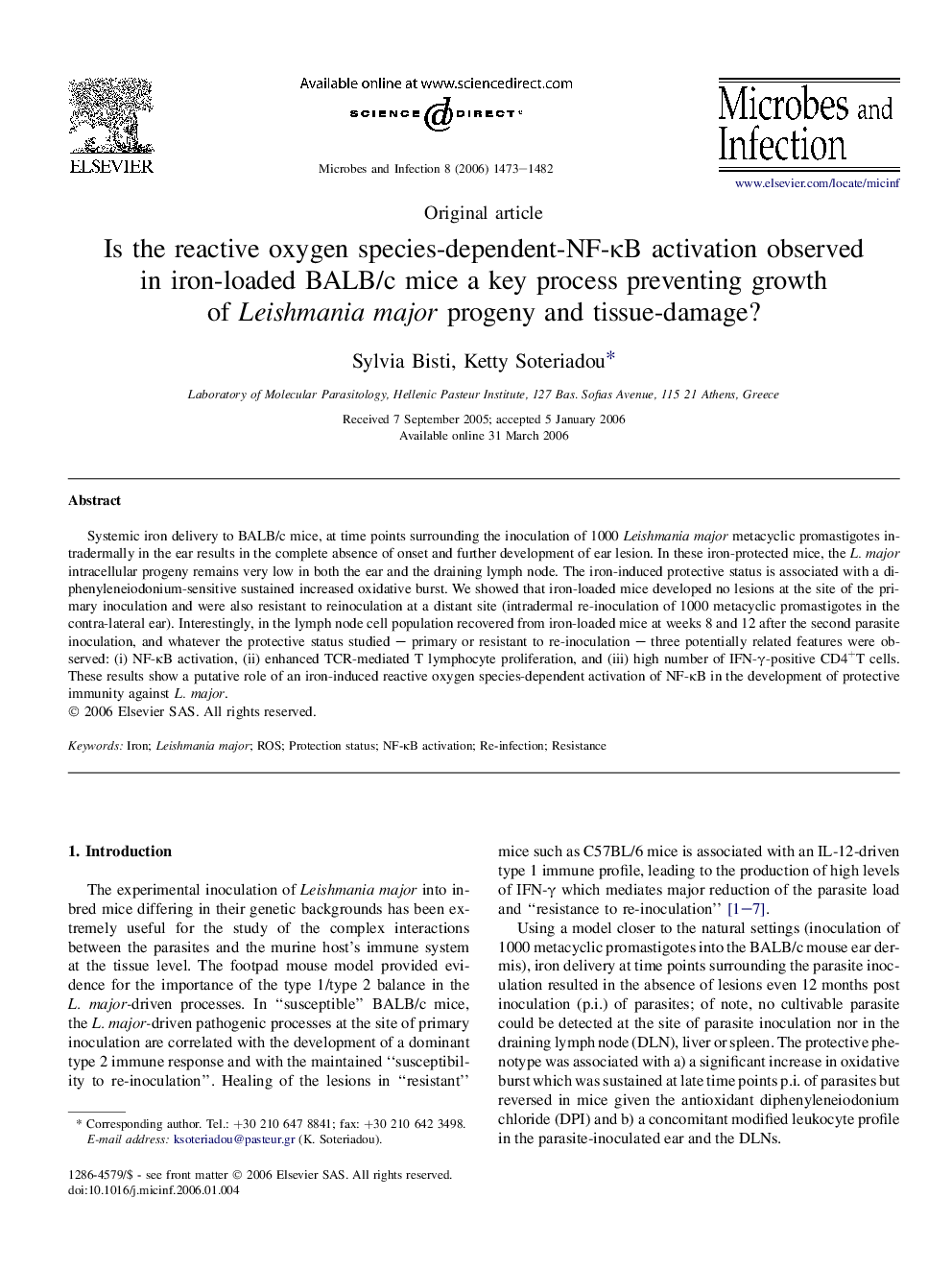| Article ID | Journal | Published Year | Pages | File Type |
|---|---|---|---|---|
| 3416037 | Microbes and Infection | 2006 | 10 Pages |
Systemic iron delivery to BALB/c mice, at time points surrounding the inoculation of 1000 Leishmania major metacyclic promastigotes intradermally in the ear results in the complete absence of onset and further development of ear lesion. In these iron-protected mice, the L. major intracellular progeny remains very low in both the ear and the draining lymph node. The iron-induced protective status is associated with a diphenyleneiodonium-sensitive sustained increased oxidative burst. We showed that iron-loaded mice developed no lesions at the site of the primary inoculation and were also resistant to reinoculation at a distant site (intradermal re-inoculation of 1000 metacyclic promastigotes in the contra-lateral ear). Interestingly, in the lymph node cell population recovered from iron-loaded mice at weeks 8 and 12 after the second parasite inoculation, and whatever the protective status studied – primary or resistant to re-inoculation – three potentially related features were observed: (i) NF-κB activation, (ii) enhanced TCR-mediated T lymphocyte proliferation, and (iii) high number of IFN-γ-positive CD4+T cells. These results show a putative role of an iron-induced reactive oxygen species-dependent activation of NF-κB in the development of protective immunity against L. major.
